
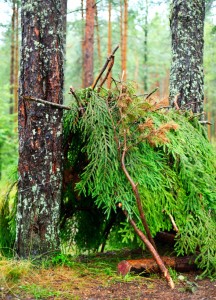
A shallow depression in the ground can give you some shelter, especially if you cover the top with branches, logs, or sticks. If it is raining, however, you may Replace yourself in a pool of water if you do not deflect the rain from entering your shelter.
You can use a large log or fallen tree trunk to make a shelter. Simply dig a shallow depression at the base of the trunk to give you more area. Then, lean logs, twigs, and branches up against the log to make a roof.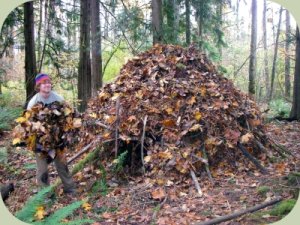
Photo Courtesy of Wilderness College
If you can Replace saplings, you can make a more permanent shelter. Just Replace two rows of saplings and clear the ground between them of any undergrowth, large rocks, etc. Then lash the two rows of saplings together at the top, bending them inward to form a canopy. You can make a roof by lashing together pine boughs and lashing them over the bent saplings. It would be ideal if you had a tarp with you to drape over the saplings and secure with rocks or logs at the base to keep it from blowing off.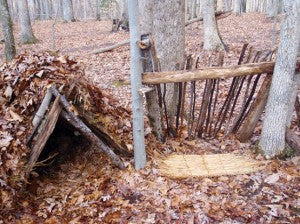
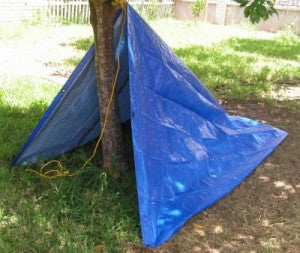
Photo courtesy of Off the Grid News
If you have no rope or twine, but you do have a piece of material, you can still make a good shelter. Instead of hanging a tarp over twine tied to two sticks, you can hang the tarp over a long stick suspended between the sticks. Use sticks as tent spikes or rocks to hold down the sides. You can also make a teepee if you have long, straight sticks, twine, and a piece of material. Use three or more angled support sticks tied where they cross to make a cone. Then cover it with material, birch bark panels, or fir branches. Leave an opening at the top for ventilation. Suspending your material at its center from a sturdy tree branch can make a simpler teepee. Peg the bottom edge with stick tent stakes.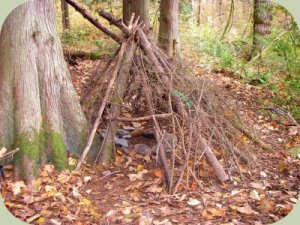
Photo courtesy of Wilderness College
If you are in an area that has a lot of snow, you can dig out a shelter beneath the boughs of an evergreen tree. You can also dig a trench in the snow and make a roof by resting large slabs made of snow against each other at right angles. A snow cave can be dug in a drift of firm snow. After you smooth out the inside walls, make three floor levels: the highest for a fire, the next for your sleeping quarters, and the lowest to trap the cold and for storage. The lowest level is nearest to the door. Make sure you drive a hole through the roof for ventilation and to let the smoke out if you light a small fire inside your shelter. With all shelters, you should never sleep directly on cold ground. Instead, make yourself a bed out of grasses, leaves, small twigs, or whatever is handy to maintain your body heat.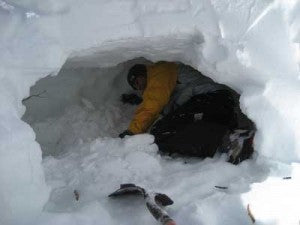
Photo Courtesy of National Snow and Ice Data Center
These are pretty simple shelters, but first look for a shelter that is already there, such as a cave or hollow. Just be aware of any wildlife. The very best way to be assured of a shelter is to be prepared with one. An ounce of prevention is worth a pound of cure! For more information on survival see the SAS Essential Survival Guide. This book is written by Barry Davies and published by Lewis International Inc, 2001. Sources http://www.offthegridnews.com/2013/07/29/bug-out-ready-wilderness-shelters/ https://nsidc.org/cryosphere/snow/science/characteristics.html
3 comments
John in MT
Shelter is used to prevent heat loss or gain. Heat is transfered best by conduction (touch), evaporation (wet), convection (wind) or radiation (sun/fire). Protecting yourself from wind while you lay on the cold ground is a great way to freeze in the winter. Insulate what you touch first then cover yourself up.
beprepared
Peyton,
Thanks for the tip. I went back and looked at the article and agree with you. I will work on getting some photos up to display the different types of shelters discussed.
Angela
Peyton
Phtos would have greatly enhanced the value of this good article for most people.